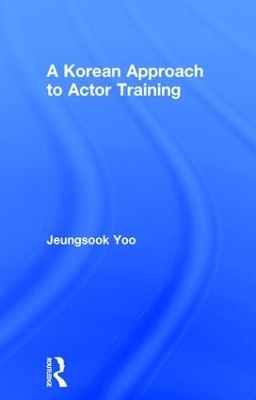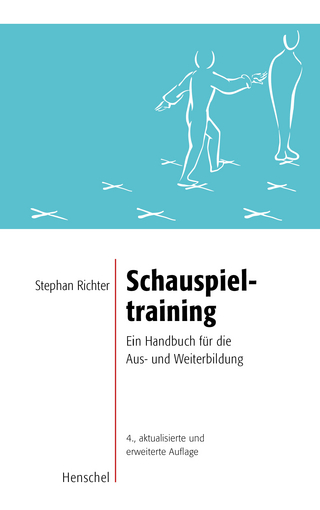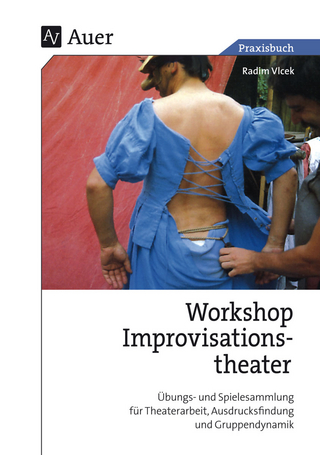
A Korean Approach to Actor Training
Routledge (Verlag)
978-1-138-18938-6 (ISBN)
This volume examines the psychophysical nature of a performer’s creative process, applying Dahnhak, a form of Korean meditation, and its central principle of ki-energy, to the processes and dramaturgies of acting. A practitioner as well as a scholar, Jeungsook Yoo draws upon her own experiences of training and performing, addressing productions including Bald Soprano (2004), Water Station (2004) and Playing ‘The Maids’ (2013–2015).
A significant contribution to contemporary acting theory, A Korean Approach to Actor Training provides a fresh outlook on performer training which will be invaluable to scholars and practitioners alike.
Jeungsook Yoo was recently Head of the World Performance course at East 15 Acting School (UK). She currently teaches at Korea National University of the Arts and Soongsil University (Korea). She holds a PhD from the University of Exeter (UK). She is co-founder with Sunhee Kim of Theatre P'yut (Seoul), and is an actress and director.
Chapter 1: Introduction – Toward Gained Nature in Artificiality
An Intercultural and Psychophysical Approach to Acting and Actor Training
Meditation and Acting as a Psychophysical ‘Technique’
Tao, Te and Kungfu
Chapter 2: Dahnhak Meditation – Recovering Sensitivity Toward Mastery
Introduction to Dahnhak
Dahnhak
Ki in Dahnhak
Three Principles
Three Methods
Dahnhak Practice
Three Methods Practice
Chapter 3: The Bald Soprano – Forming an Active-Passive Relationship
Introduction
From Paper to Time and Space – The Nature of Acting
Acting – A Psychophysical Activity
Words – Psychophysical Vibration
Forming an Active-Passive Relationship to a Psychophysical Score
A Process of Creating a Score
Space as a Channel – Resonance
Integration
Chapter 4: The Water Station – Moving Ki in Inner and Outer Space
Introduction
A Starting Point of Acting – A Way of Appreciation
The ‘Visible’ and the ‘Invisible’
A Design of Awareness and Ki – Moving Ki in Time and Space
Scene 1 GIRL
Scene 2 TWO MEN
Scene 3 WOMAN WITH A PRASOL
Scene 9 THE GIRL
Autonomy of the Ki-Flow
Chapter 5: Playing ‘the Maids’ – Tuning Emotional Ki
Introduction
The Korean Imagination – Han and Salpuri Dance
Salpuri Dance – Embodiment of Han
Han – The Aesthetics of Fermentation
Emotion as Ki
Emotion in the Context of Its Embodiment
Tunable Elements of Emotional Ki
Tuning the Characteristics of Emotional Ki
‘I Can Not’
‘Release of Han Dance (Salpuri) and Vocal Duet’
A Character’s Emotion and an Actor’s Emotion
Chapter 6: Conclusion – A Theory of Sympathy
Bibliography
| Erscheinungsdatum | 23.09.2017 |
|---|---|
| Verlagsort | London |
| Sprache | englisch |
| Maße | 138 x 216 mm |
| Gewicht | 453 g |
| Themenwelt | Kunst / Musik / Theater ► Theater / Ballett |
| ISBN-10 | 1-138-18938-3 / 1138189383 |
| ISBN-13 | 978-1-138-18938-6 / 9781138189386 |
| Zustand | Neuware |
| Haben Sie eine Frage zum Produkt? |
aus dem Bereich


